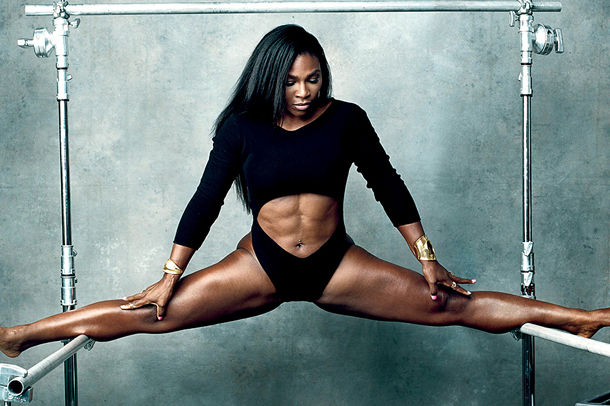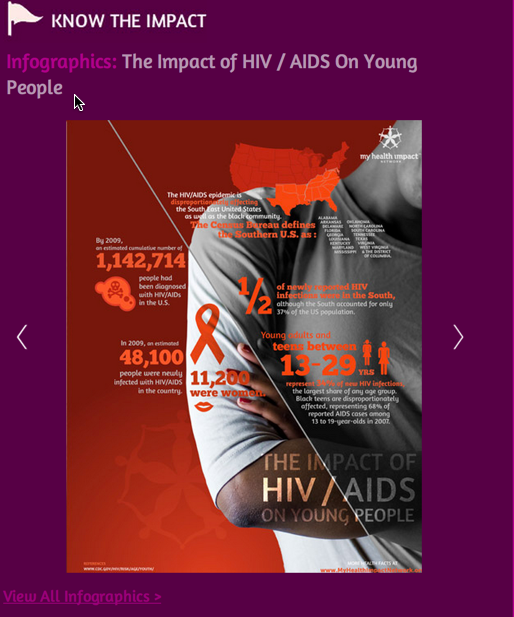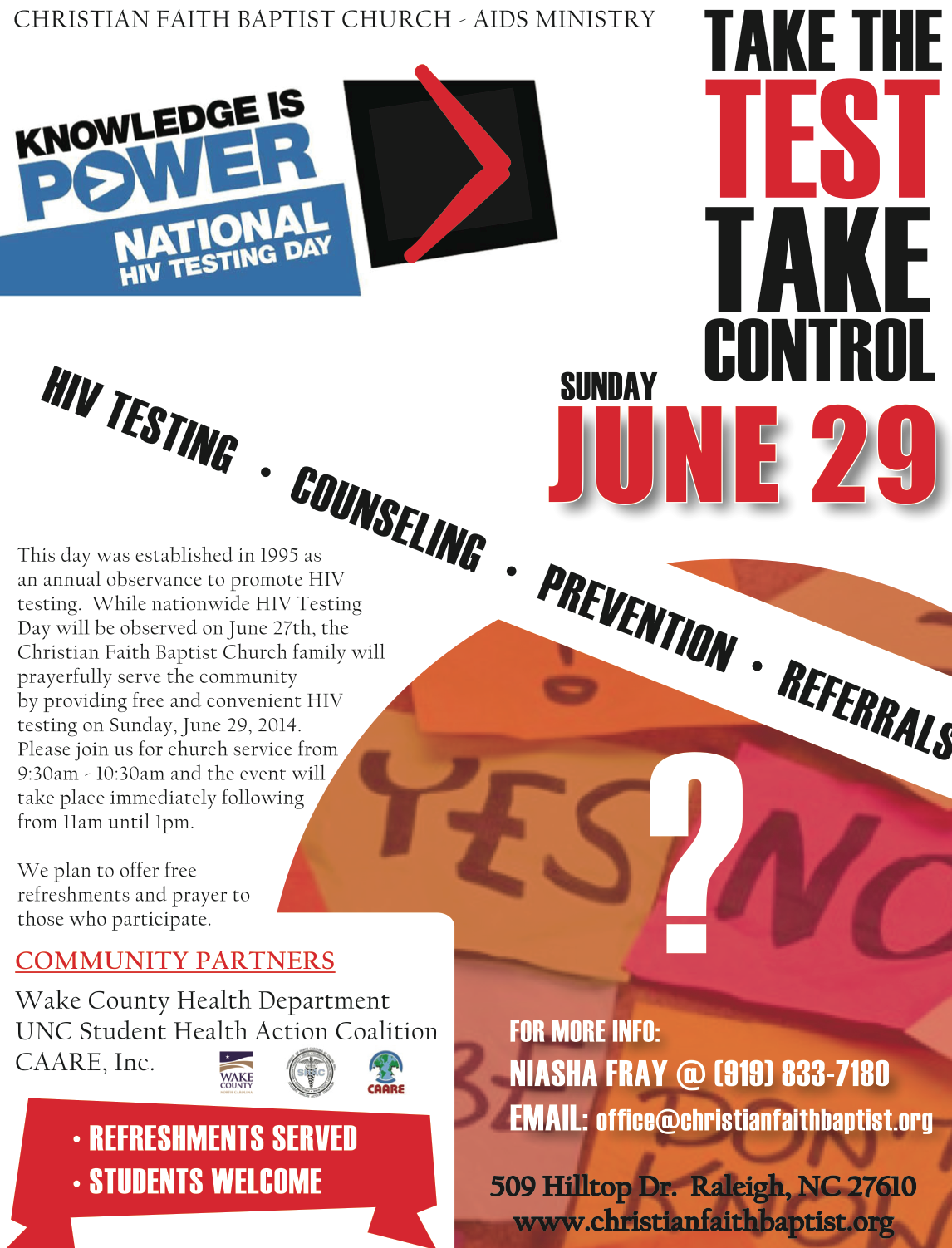myHIN Blog
Category: Women’s Health Articles

June 13, 2022
Managing Hypervisibility in the HIV Prevention Information Seeking Practices of Black Female College Students
published in Journal of the Association for Information Science and Technology by Lynette Kvasny Yarger and Fay Cobb Payton
#HealthCare #UX #InformationSeeking #BlackWomen #Hypervisibility
Share

September 28, 2015
Why aren’t you smiling
Serena Williams’ womanhood has recently been under question. If you google ‘serena williams womanhood', you without a doubt, stumble upon some articles speculating that she is a male due to her amazing body. The body shaming that has surfaced due to this fit African-American Tennis player has without a doubt come at an interesting time, at the peak of her career. It seems as though the media had to discredit her exceptional achievements and question her on every move (including gender and health).
Interestingly enough, many of the gender questions have ended as it has become public knowledge that she has a relationship with Drake, the Canadian actor and rapper. Now that she has a man on her arm, she is somehow now validated as a woman. The presence of a man, or his absence, should not be validating criteria to how feminine a woman is perceived. But because the media has “evidence” of her sexuality, there is no one questioning her womanhood any longer.
It often seems like the media just won’t let Serena live. As a woman, and one who smiles pretty often, it actually grinds my gears when I am asked why I’m not smiling. Most of the time there is some male stranger who thinks they have the authority and the privilege to tell me to smile. I assume this describes the reporter who thought it was reasonable to ask Serena during the press conference why she wasn’t smiling. Unfortunately we live in a society where some members expect you to react in a prescribed way. When you don’t, they assume something must be wrong as the reporter did during the press conference.
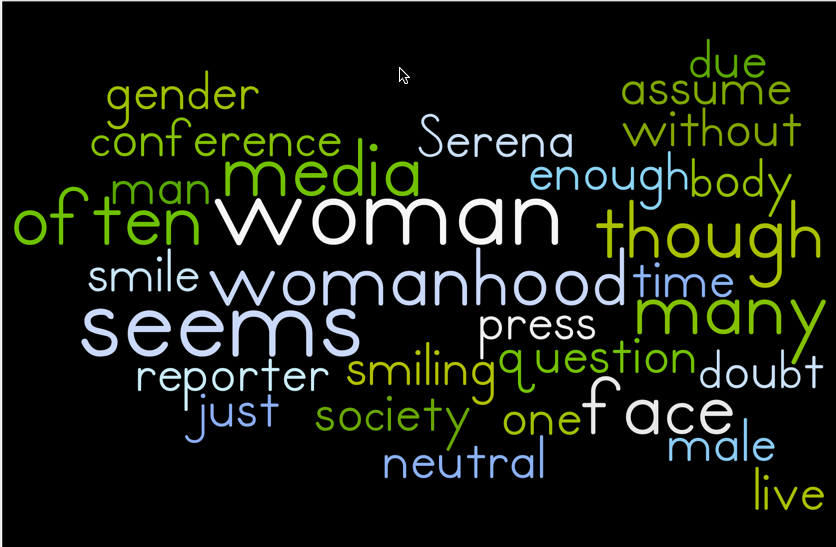
It is as though society unconsciously has a problem when females keep a neutral face. During the recent Apple Event this September, the Adobe Creative Suite presentation showed the ease of being to edit the woman’s face from neutral to a moderate smile. The model’s resting face was not good enough and had to be modified it seems. It often seems as though many women just can’t win. We can only wait for the day when our world is willing to accept that there are many definitions of a woman and all of them are SELF-DEFINED requiring no explanation.
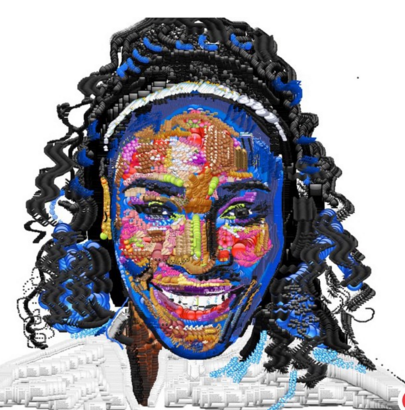
Follow @myhealthimpact on Twitter; see myHealthImpactNetwork.org (Web) and myHealthimpact (Tumblr and YouTube).
Share

June 09, 2015
Growth
The key to maintaining a long relationship is keeping it healthy. Think of it as the same way you would treat a plant. You have to water it, nurture it, and give it some room to grow. Growth being the most important. Your significant other should complement your growth and you should do the same for them. This means encouraging one another to pursue those dreams and maintain high goals.
From my personal experience, it can be somewhat challenging if those dreams take your significant other to another side of the country. At the end of the day you have to put yourself in their shoes and realize that you would like the same support in that situation.
Relationships can be hard; that’s no secret. However, recognizing how the growth of the relationship affects the individuals is amazing. Growing as one and yet still two individuals is the best part of it all.
Psychology Today gives a couple healthy nuggets to maintaining a healthy relationship. I’ll leave you all with a couple that resonated with me:
- Give what you want to get.
- Successful relationships take work.
- Find a way to become and stay best friends.
Share

January 22, 2015
Breaking the Silence
With the new sense of hypervigilance, particularly in relation to domestic violence, I hope that we as a community can come together in active support of survivors of abuse. It must be clear that violence towards others in any form should not to be accepted, regardless of profession. I hope to see advancements with the NO MORE PSA campaigns, Purple Purse, and the NFL, realizing their goals of decreased rates of domestic violence and increased support of the victims.
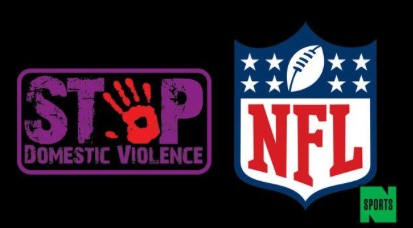
In recent months there has been significant media coverage concerning the lives, specifically the legal matters, of professional athletes. The abuse perpetrated by Ray Rice was seen by many outside of the sports world, and was the first of many noteworthy incidents involving his colleagues of the National Football League. Since Rice’s arrest, Greg Hardy, Ray McDonald, and Adrian Peterson have been in the news for their respective criminal acts. Athletes breaking the law is nothing new. In the past, fans have often been aware of the personal lives of athletes, even with minimal media coverage, but there seems to be a shift regarding the awareness. It is no longer solely fans who hear about the incidents, the coverage by major news outlets has increased the audience.
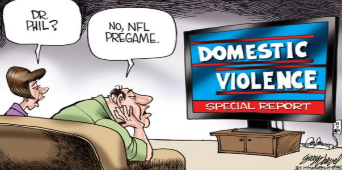
USA Today compiled a database of all NFL player arrests since 2000, citing 85 of the 713 arrests were made regarding situations of domestic violence. Being that domestic violence is the one of the most underreported crimes, it is reasonable to assume that these numbers are not completely representative of the truth. The difficulty to speak about domestic violence is highlighted in the “Speechless” series of NO MORE PSA. The commercials have aired in recent weeks showing celebrities, as well as current and former NFL players sitting in silence as they attempt to speak on domestic violence. Allstate Foundation Purple Purse is another group bringing domestic violence, and financial abuse in particular, to the forefront. Allstate Foundation reports that financial abuse occurs in 98% of domestic violence cases. This staggering number has prompted Purple Purse to make it “fashionable” to speak about domestic violence through fundraising to support survivors.
 As we have seen, the issues faced by athletes are mirroring the societal issues we are facing today. The question of corporal punishment, the prevalence of substance abuse, the charges of domestic violence, and even the statements of solidarity displayed following the killings in Ferguson and Staten Island, in relation to the athletes of the NFL, have all led to further questions addressing all people, instead of athletes exclusively. We must continue to recognize that as contributing members of society we have a responsibility to treat ourselves, and each other, with respect and dignity at all times.
As we have seen, the issues faced by athletes are mirroring the societal issues we are facing today. The question of corporal punishment, the prevalence of substance abuse, the charges of domestic violence, and even the statements of solidarity displayed following the killings in Ferguson and Staten Island, in relation to the athletes of the NFL, have all led to further questions addressing all people, instead of athletes exclusively. We must continue to recognize that as contributing members of society we have a responsibility to treat ourselves, and each other, with respect and dignity at all times.
Continue to follow @myhealthimpact on the latest news regarding domestic violence and your health!
Share

September 01, 2014
I’m in My Fourth Year… and Just Getting Started!
This month ushered in the start of my fourth year of graduate school. For the first time while in my Ph.D. program, I no longer felt like a young doe -- no tremor in my legs -- as I walked on campus to embark upon another school year. The confidence I now feel and clarity with which I view my objectives are undoubtedly attributable to the experience and knowledge I acquired over the summer. I was afforded the opportunity to work with executives at the Black Entertainment Television (BET) Networks on their youth initiatives during the BET Experience and BET Awards show weekend in Los Angeles. I also launched two web usability studies for the Graduate School at my university. Finally, I put the finishing touches on a thesis and am now shifting my focus to my comprehensive paper and dissertation.
These are exciting times now. Until recently, keeping up with coursework, dealing with a health issues (breast cancer survivor!), managing work/family/life balance, and conducting supervised research have all encompassed my graduate school experience. Now, I am able to craft and develop my own scholarly identity. My research interests focus on youth engagement with new media and digital technologies, the ways it impacts their health, and more specifically their sexual health, behaviors, and development. My incoming interest in the topic solidified through my work with the Pathways to African American Success (PAAS) project, a family-based intervention designed to reduce risk behaviors of rural African American youth.
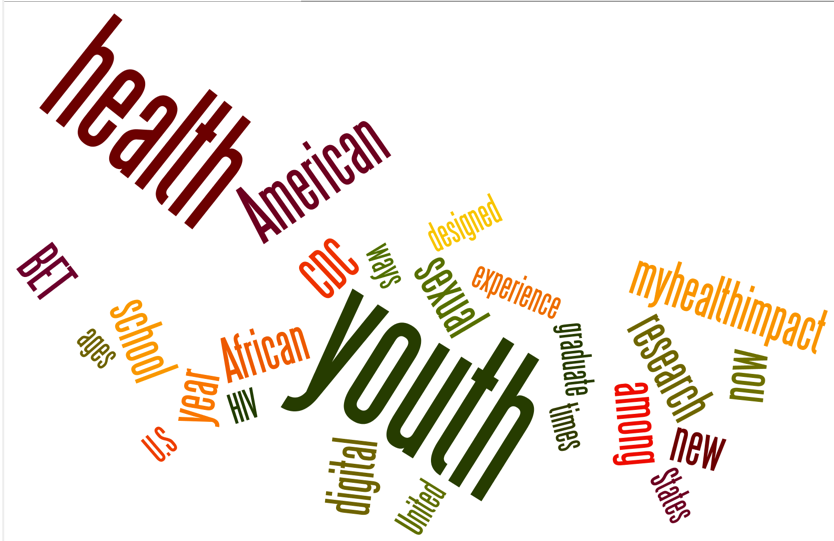
Through my classes, I was able to explore the issue of HIV/STI infection and transmission among youth in the United States, and particularly among African American youth. HIV/ STI among American youth is a major public health problem. In 2010, youth ages 13 to 24 years old constituted one-fourth of all new HIV infections in the United States (U.S. Centers for Disease Control and Prevention [CDC], 2014). Further, the CDC estimates that nearly 60% of HIV-infected youth are not aware of their HIV-status. Similarly, youth ages 15 to 24 years old, who make up 27% of the nation’s population, account for 50% of the 20 million new STIs in the U.S. each year (CDC, 2013). My research and dissertation will consider the ways that youth are formally and traditionally socialized regarding sexual health and risk, and the challenges, threats, and opportunities introduced by the recent rise in digital technology access, utilization, and digital media consumption. Congruent with these foci are the aims of MyHealthImpactNetwork, which involves leveraging technology to promote sexual, mental, and physical health. I look forward to engaging with @drfayonline and the #myHealthImpact organization (@myhealthimpact on Twitter), designed for – and by - college students interested in improving health and reducing health disparities. Fun times ahead… and I’m just getting started!
Magaela Bethune is a Ph.D. student at Vanderbilt University in the Community Research & Action program. Her website (www.magaelabethune.com) features curated content related to youth, technology, and health. Upon graduation, she plans to continue research informing the development of health interventions that leverage digital technology and media for youth.
Share

July 30, 2014
Women’s Role in Men Health
Not to generalize all men but I know that the guys around my house used to absolutely despise going to the doctor because they felt like it was a waste of time. They believed that ALL could be healed with anything in the medicine cabinet and band-aids. This was my Dad before he suffered from a heart attack. These days I feel like our family dynamic is a little different. My Dad definitely doesn’t mind going to the doctor now and instead suggests healthy options at the dinner table.
 My Mother and I are the only two females in my household and although my Dad has taken a different role in the health of our family, at the end of the day, the women keep things realistic and rational. There are many food options that my Dad brings to the table, but we (the women) figure out how to make these things work for our family or how to politely tell him “No, we’ll pass on that one”. From incorporating more fish, chicken and turkey into our diets and working out pork and beef to even starting our own family garden, our family has been made a complete lifestyle change. What’s an idea without someone to put it into action? Right, just an idea.
My Mother and I are the only two females in my household and although my Dad has taken a different role in the health of our family, at the end of the day, the women keep things realistic and rational. There are many food options that my Dad brings to the table, but we (the women) figure out how to make these things work for our family or how to politely tell him “No, we’ll pass on that one”. From incorporating more fish, chicken and turkey into our diets and working out pork and beef to even starting our own family garden, our family has been made a complete lifestyle change. What’s an idea without someone to put it into action? Right, just an idea.
I believe that women play a huge role in men’s health. Typically because women are more aware of the signs of pending health issues thus sending up a red flag and ensuring that the men (in our families) see a doctor. So let's just face it, we are the backbone!

Share

July 22, 2014
Black America’s Silent Epidemic – Outtake of @OWNTV @Lisaling – Our America
We watched the June 26, 2014 Our America series on OWN. In this series, journalist Lisa Ling covered the HIV epidemic in Black America. Our team watched intently and followed the Twitter hashtag during the show. What would be different about this coverage? How would the Black community be portrayed? Would this be, yet, another depiction of all things wrong in and with the community? How would it reach young people, the millennials?
Here are comments below from the research scholars (millennials) on the MyHealthImpact team and their thoughts on the series. Comments have been shorten for this blog post.
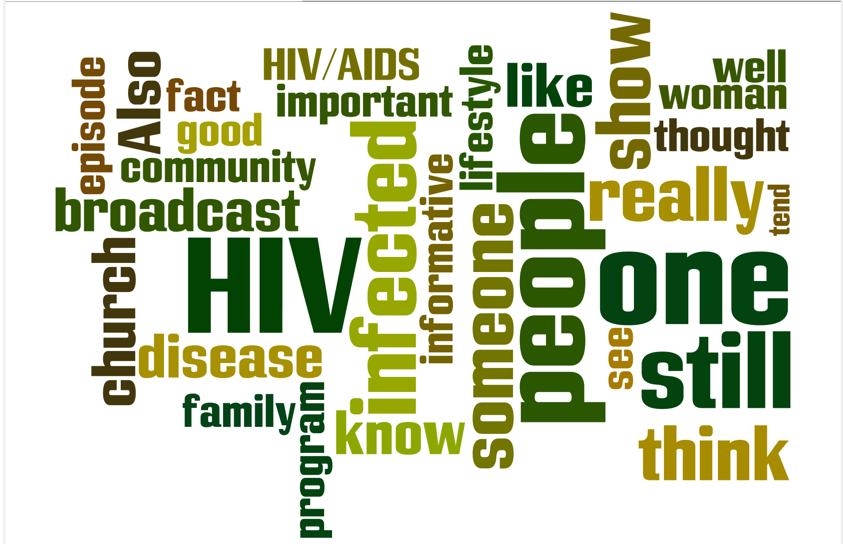
Follow us @myhealthimpact on Twitter. See myhealthimpactnetwork.org for additional content and health information.
Share

May 21, 2014
Where are the black doctors?
 Recent studies have revealed that 5 percent of physicians and dentists in the United States are black. With a statistic like that, how does one find the courage and motivation to work towards a profession where they see no one like themselves? As I continue my journey in applying to medical school this summer, I find myself trying to beat this statistic and become the example. Hopefully a general surgeon that will one day be able to share her personal stories, and most importantly, my struggles, so that future black medical school candidates can see examples of successful black physicians who likely had similar backgrounds, experiences and struggles as they do. With that said, I think its important to start this process early. If you introduce the possibility and the representation of black physicians at a young age, I believe that more black students would embrace the idea of becoming a physician. In addition to that, black students would view Medical and Dental School as an option and not a dream. It’s time to change the statistic and move above it. We can no longer let the challenges and academic curriculum for preparing and applying to health professional schools hinder our ability as black students to perform and show that we too belong in these professions. Though sometimes things may get difficult, there will always be resources available to help guide and encourage us. The need for more black doctors should be taken more seriously. The shortage in black physicians can potentially make access to healthcare even more challenging for minorities. Thus, affecting minorities’ access to healthcare and proper treatment. So, the question no longer needs to be, “Where are the Black Doctors” but rather “Who are all these black doctors”. Though this is not something that can be changed over night, it can be changed in the future. As long as the seeds are planted, the tree will grow. Black physicians need to work together to help inspire future black doctors.
Recent studies have revealed that 5 percent of physicians and dentists in the United States are black. With a statistic like that, how does one find the courage and motivation to work towards a profession where they see no one like themselves? As I continue my journey in applying to medical school this summer, I find myself trying to beat this statistic and become the example. Hopefully a general surgeon that will one day be able to share her personal stories, and most importantly, my struggles, so that future black medical school candidates can see examples of successful black physicians who likely had similar backgrounds, experiences and struggles as they do. With that said, I think its important to start this process early. If you introduce the possibility and the representation of black physicians at a young age, I believe that more black students would embrace the idea of becoming a physician. In addition to that, black students would view Medical and Dental School as an option and not a dream. It’s time to change the statistic and move above it. We can no longer let the challenges and academic curriculum for preparing and applying to health professional schools hinder our ability as black students to perform and show that we too belong in these professions. Though sometimes things may get difficult, there will always be resources available to help guide and encourage us. The need for more black doctors should be taken more seriously. The shortage in black physicians can potentially make access to healthcare even more challenging for minorities. Thus, affecting minorities’ access to healthcare and proper treatment. So, the question no longer needs to be, “Where are the Black Doctors” but rather “Who are all these black doctors”. Though this is not something that can be changed over night, it can be changed in the future. As long as the seeds are planted, the tree will grow. Black physicians need to work together to help inspire future black doctors.
Share

March 20, 2014
College-Age Generation and the Affordable Care Act (ObamaCare)
In February 2014, @myhealthimpact and @medicalmentors held a Twitter chat (#MedTechImpact) to discuss the importance of the Affordable Care Act (#ACA)for the college-aged population. The chat included experts from the Congressional Black Caucus Foundation, Howard University, Booz Allen Hamilton and the Maryland County Department of Health and Human Services.

Topics included: common misconceptions about the Affordable Care Act; finding #ACA online information; why should college students and the college-age population have health care coverage; advantages and disadvantages of the Act. We also discussed how the Act encourages workforce development diversity among medical and health providers as well as information and computing technologists.
The infographic below can be found on the myhealthimpactnetwork.org site and/or here directly and lists some key facts regarding the #ACA. The word cloud shows the keywords from the chat including students, health, college, join, patient and tech. As discussed during the Twitter chat and shown in the infographic, the #ACA will:
- Enable young people to stay on their parents’ health insurance until age 26.
- Provide coverage for preventive care.
- Provide preventive care and screenings for #HIV, #depression, #diabetes and many others.
- Provide care even for those with pre-existing conditions.
The final day to register for health coverage is March 31, 2014. #GetCovered. Check out the details for yourself. Inform. Educate and empower yourself. See https://www.healthcare.gov/young-adults/

Share
In Partnership with: Poole College of Management, College of Humanities and Social Sciences, National Science Foundation, Penn State
Take Action, Get Tested: Find Your Local Testing Center Why Get Tested?

